How Soon Is Now?
Printed in the Winter 2017issue of Quest magazine.
Citation: Smoley, Richard, "How Soon Is Now?" Quest 105.1 (Winter 2017): pg. 16-19
An Interview with Daniel Pinchbeck
The noted Gen X author and thinker discusses collective awakening, regenerative ecology, and the Burning Man festival.
By Richard Smoley
If I were to think of a central theme in the work of Daniel Pinchbeck, I would say that it is the meme of social transformation and collective awakening. (A meme, in case you’re not familiar with the word, is the intellectual equivalent of a gene—it is an idea that perpetuates itself. The concept of God is a meme; so is the knowledge of how to build a canoe.)
Pinchbeck is the author of several books, including Breaking Open the Head: A Psychedelic Journey into the Heart of Contemporary Shamanism (Broadway, 2002); 2012: The Return of Quetzalcoatl (Tarcher/Penguin, 2006); and Notes from the Edge Times (Tarcher/Penguin, 2010). His new book, How Soon Is Now?, will be released in February 2017. It features a preface from rock star Sting and an introduction from actor and comedian Russell Brand. Pinchbeck is also one of the founders of the websites Evolverhealth.com and Reality Sandwich. His own website is pinchbeck.io.
In his book 2012: The Return of Quetzalcoatl, Pinchbeck did not so much insist that a great upheaval would take place in the year 2012, but rather suggested that the year could serve as a meme that would inspire collective awakening. Similarly, in How Soon Is Now?, he contends that the present environmental crisis can and must serve as the catalyst for an initiation of the human race into higher levels of being—and into new, regenerative modes of living and working.
Pinchbeck has also written about Burning Man, a mass gathering that takes place in the Black Rock desert in Nevada in early September of each year. (Figures for the 2015 event indicate that over 67,000 people came.) Participants create Black Rock City, described on the Burning Man website as “a temporary metropolis dedicated to community, art, self-expression, and self-reliance.” As its name indicates, the festival ends with the burning of a giant effigy (sixty-nine feet high in 2015) of a man. The event originated with the original burning of an effigy on a San Francisco beach in 1986 by artists Larry Harvey and Jerry James. The founders may have intended to create a kind of equivalent of the ancient mystery rites. Writing pseudonymously in Gnosis magazine in 1995, Harvey said, “Organizers of this modern mystery disclaim any conscious intention to reproduce the past,” but added that “the parallels are striking” between the ancient mysteries and Burning Man.
This interview was conducted by e-mail in the spring of 2016.
Richard Smoley: To start with, why don’t you talk a bit about your background—where you came from and where you see yourself today.
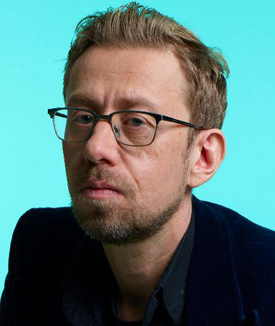 Daniel Pinchbeck: I was born in New York City. My parents were both artists. My father was an abstract painter and sculptor who came from England in the early 1960s to be part of the New York School, the Abstract Expressionists, but missed them by a few years. My mother is a writer and book editor. Her memoir, Minor Characters, focused on her childhood and her experiences as a young woman with the Beat Generation. She dated Jack Kerouac for a while, in 1957, and was with him when On the Road came out and he became a culture hero. This also hastened his self-destruction, as fame fueled his alcoholism.
Daniel Pinchbeck: I was born in New York City. My parents were both artists. My father was an abstract painter and sculptor who came from England in the early 1960s to be part of the New York School, the Abstract Expressionists, but missed them by a few years. My mother is a writer and book editor. Her memoir, Minor Characters, focused on her childhood and her experiences as a young woman with the Beat Generation. She dated Jack Kerouac for a while, in 1957, and was with him when On the Road came out and he became a culture hero. This also hastened his self-destruction, as fame fueled his alcoholism.
I went to college for a few years—at Wesleyan University in Connecticut—before dropping out and working in magazines. I was an editor and freelancer writing on art and culture. I published my first book, Breaking Open the Head, on psychedelic shamanism, in 2002. My second book, 2012: The Return of Quetzalcoatl, came out in 2006. I was featured in the documentary 2012: Time for Change, released in 2010. We looked at the prophecies of cultures like the Maya, but also looked at potential solutions to our social and ecological crises, such as permaculture, bioremediation, and alternatives to the monetary system. I also started the company Evolver.net with friends.
Today I am finishing my third book, How Soon Is Now?, which will come out in February. The book looks at the ecological crisis as a rite of passage or collective initiation for humanity. I then consider how we would have to change our technical infrastructure, social and economic system, and our media and culture, if we want to avert megacatastrophe, as much as possible. I propose this megacrisis could be a great opportunity for a collective awakening and unification of humanity. It could lead us to explore and channel our psychic abilities as well as our material and technical skills.
Smoley: More and more over time, people seem to be defining themselves generationally. There are the Boomers, Gen X, the Millennials, and so on. Some of these categories are due to media glibness, but it’s also true that many people genuinely see themselves this way. How do you think this applies to spirituality?
Pinchbeck: I don’t know, to be honest. Generations are very large generalizations! I suppose that different generations have psychological traits based on social conditions. I am Gen X, and we were kind of smooshed between the expansive Baby Boomers and the digital age. For the most part, we didn’t have access to resources. When I was young, there was no tech world, where a twenty-five-year-old could become a billionaire through a startup. Now the Millennials are inheriting the resources of the Boomers. The Millennials seem curious and open-minded, but also I think lurking in their psychology is a sense of the ecological crisis as a vast thing. This means that you may as well live for today, as tomorrow is very uncertain. Obviously social media is also having a huge impact, shattering attention spans but creating “group minds.”
There may be larger astrological impacts. Richard Tarnas develops this perspective in his book Cosmos and Psyche. It may be that long transits influence generations in various ways. The influence of Leo on the Baby Boomers, for instance, may have inflated their inherent narcissism, and made it difficult for them to see beyond their own narrow self-interest.
Smoley: What changes have you seen in your own spirituality as you’ve matured through the years?
Pinchbeck: I don’t like the term spirituality, as I find, when we use it, it tends to perpetuate a Western bias—a duality between spirit and matter, or spirit and nature. I like the terms occult or esoteric more. My esoteric or mystical worldview was developed in great depth in my second book, 2012, where I sought to make a synthesis of quantum physics, Eastern mysticism, the indigenous worldview, and modern occultists such as Rudolf Steiner and Carl Jung. Nothing much has changed since then.
A recent experience of the psychedelic 5-meo-DMT, produced by the bufo toad, seemed to substantiate the Buddhist conception of nirvana or the Void—a state of infinite bliss with no subject-object distinction, no time and space, and also no ego. No you. This seems to be the ultimate state of reality. We may ultimately understand it as the tenth dimension of vibratory superstrings that underlie any potential orchestration of time and space.
I found this experience, at first, very threatening to my sense of my identity and ego. While writing my 2012 book, I also had visionary experiences suggesting that free will, as we ordinarily understand it, is an illusion and that the universe is ultimately an expression of a unified consciousness that is, as the Hindus believe, playing with its infinite creative capacities. I think it takes work, from a Western worldview, to fully surrender to such a perspective and find the freedom within it. As Vedanta reminds us, ultimately we are that free-willing consciousness, or that “Poetic Genius,” in William Blake’s terms, which is exploring and creating through the medium of time and space and finitude.
Smoley: In a recent article, you called for regeneration as opposed to the current call for sustainability. Could you talk about this and what you mean by it?
Pinchbeck: I think we have to give up the illusion that we can “sustain” our current way of life or this political-economic system. Also, I think sustainability in general is the wrong goal to put forth. Nature does more than sustain itself—it thrives and flourishes. I love William McDonough’s ideas in Cradle to Cradle: Remaking the Way We Make Things, also the work of Janine Benyus on biomimicry, and, of course, Buckminster Fuller’s ideas on design science. They all suggest that humanity could reinvent itself through a design revolution so that all of our industrial production supports the flourishing of natural systems.
This idea of moving toward a regenerative system opens up new space in our minds for envisioning how we can transform our present world. It also helps inspire us to engage in that process. What would a regenerative economic system look like? How would we incentivize activity that improves the health of the biosphere and penalize activity that further damages our ecosystems? Would we need to go beyond a debt-based currency altogether? How do we create social and political structures that are modeled on natural systems? I believe this approach will soon become the new paradigm.
Smoley: I gather that you were recently involved with an art installation in Times Square. Could you tell us a little about this?
Pinchbeck: My voice was recorded for Jungle-ized, an audio project that mapped the Amazonian jungle onto Times Square. Essentially, you wear headphones, walk around, and hear different bird and animal sounds, tribal chants, the rushing of the river, and so on—and also my voice, as well as that of the anthropologist Jeremy Narby. The piece was a beautiful intervention.
Smoley: A few years ago, your writing focused a lot on the year 2012. How did the coming of this year fulfill your expectations, or disappoint them? Or both?
Pinchbeck: My book 2012: The Return of Quetzalcoatl, on the prophecies of cultures like the Maya and Hopi, came out in 2006. In that book, I never argued that we would see a massive psychic awakening or destruction at the end of the Mayan Long Count (December 21, 2012). What I realized was that this was all up to us. The end of the Long Count was an invitation for us to undergo a conscious awakening as a species, to realize that postmodern civilization had become disconnected from natural time and from some crucial aspects of indigenous culture, such as their spiritual connection to the earth.
In my film 2012: Time for Change I tried to present tools we could use to change ourselves as well as the direction of our society. I became interested in our potential to use social networks and other virtual tools to build a network of communities around the world actively exploring alternatives. This is what I tried to do with Evolver.net and the Evolver Network.
I did become very disappointed and sad after 2012, because I felt that people had not understood what I was expressing over and over as clearly as I could. I felt the media willfully distorted my views whenever possible, calling me a doomsday thinker, which was the opposite of what I expressed in my writing and my film. The wild expectations that some people had about that time were thwarted, and some of them reacted by throwing the baby out with the bathwater. On the other hand, many people did have profound experiences around that date, and I believe we are seeing an ongoing opening of consciousness that may soon reach a tipping point.
I still believe in the truth of the prophecies in that I think it is totally clear and obvious that we are in a time of intense transformation. Either we will undergo a rapid evolution as a species and figure out how to cooperate as one global community, or we will see a massive decline in population or potential extinction, as we tear apart the web of life. We are currently eliminating 100–150 species a day—about 10 percent of the earth’s remaining biodiversity— every ten to fifteen years. Oceans are 30 percent more acidic than they were forty years ago, leading to a projected breakdown of the coral reefs by 2050 or so. As climate change accelerates, we confront the potential for a massive eruption of methane from under the Arctic that could trigger a temperature rise of four or five degrees Celsius within a few decades.
The thesis of How Soon Is Now?, my new book, is that the ecological megacrisis is an unconsciously self-created rite of passage or initiation for us as a species. We will be forced to integrate aspects of our technoculture with aspects of indigenous design, creating a new creative synthesis, in order to prevent the worst consequences of ecological collapse. The sooner we realize this is happening, the faster we can start working together. I believe this threshold is what we have been warned about, and prepared for, by the prophecies around the world. It is an archetypal process happening within and through the collective psyche.
Smoley: There are a lot of tasks facing us today that seem very urgent. Could you give a little advice about how someone can find his or her right work in these times?
Pinchbeck: I discuss this at length in my new book. I think we need a comprehensive understanding and a strategic model for what is happening and what could happen—that is what the book presents. We can then seek to use our own skills and resources for the greater goal. For instance, someone with a great knowledge of corporate structures or financial capital could use those skills to create new companies based on ecological and ethical principles. Someone else may want to help build a model of a cooperative, alternative farming community. Yet another person may feel called to make art that puts forth a new mythology of planetary awakening and rebirth. But as I said, the first thing is that we must realize what is in fact possible for humanity and then find the will and courage to work for that outcome. Then we can find our own position in the overarching structure, if we want.
Smoley: Recently you wrote a piece saying why you were no longer going to the Burning Man gathering. Could you explain what this event is for people who may not know, and could you say why you became disillusioned with it?
Pinchbeck: I said I was taking a break from Burning Man. I do intend to go back. I went fifteen years in a row, and I think it became very familiar to me. I almost became a bit jaded about it. Burning Man is an art festival that models a neofuturistic anarchist utopia. They have a set of ten principles that include radical inclusion, self-expression, gifting (no commerce), leaving no trace, and so on. These principles really resculpt the way people interact and create a beautiful space for creativity and human freedom. When I first went in 2000, the festival attracted 25,000 people. Now it is 80,000 and still growing. It has also become a magnet for the world’s wealthy jet set.
Burning Man faces the same problem as many things that become supersuccessful: it is in danger of turning into a Disneyland version of itself. Part of the point is that the festival is a kind of initiation. People have to build their own structures and learn how to survive in a very harsh desert environment. However, people are now overcoming this problem, solving it with a credit card. They fly in on private planes, and all of their costumes, drugs, and art cars are ready for them. They get to have the experience but miss the meaning of it.
I feel there are two major ideological strains running through Burning Man: hedonistic libertarianism and mystical anarchism. Because of its rapid success, the hedonistic libertarian strain is now dominant. I personally identify with the mystical anarchist side, and hope to see a resurgence of it.
Deep down, I agree with the philosopher Walter Benjamin, who noted, “For those without hope, hope was given to us.” For that crucial subset of human society which has attained freedom and wealth, the great opportunity is to use our intelligence empathically, to create a world that works for all, even if that means we must sacrifice some of our own excesses for a time.


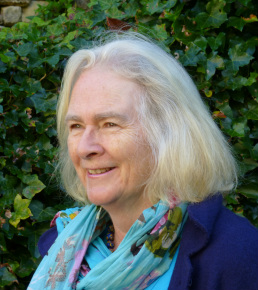 The first beats of the shaman’s drum were resounding, starting slowly but quickly mounting in intensity. Then there was the sudden sound roar of a helicopter overhead, completely obliterating the sound I was listening to. I clicked on the pause button, and peered out of the window. A large army helicopter was circling right above me, barely skimming the rooftops of my city home. Its presence felt incongruous, and menacing. But was it? Had I perhaps inadvertently invoked a shamanic presence as I played the recording of the ritual in my study? After all, it is said that shamans can fly.
The first beats of the shaman’s drum were resounding, starting slowly but quickly mounting in intensity. Then there was the sudden sound roar of a helicopter overhead, completely obliterating the sound I was listening to. I clicked on the pause button, and peered out of the window. A large army helicopter was circling right above me, barely skimming the rooftops of my city home. Its presence felt incongruous, and menacing. But was it? Had I perhaps inadvertently invoked a shamanic presence as I played the recording of the ritual in my study? After all, it is said that shamans can fly.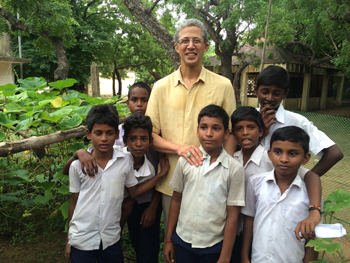

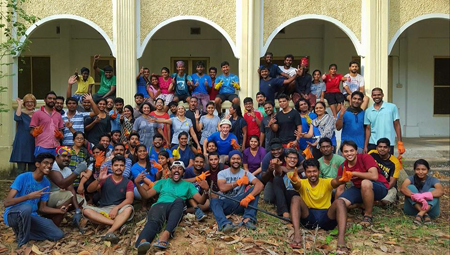
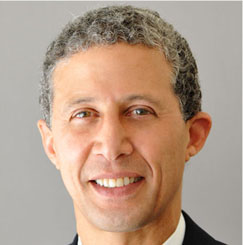 During the lifetime of Joy Mills, and particularly in her later years, she frequently would focus on one particular question: “What does it mean to be fully human?” The answer seems obvious until you actually have to think about it. Clearly it involves more than merely standing on two legs and thinking. In The Secret Doctrine, H.P. Blavatsky says that the human results from the coming together of three evolutionary streams, “the Monadic (or Spiritual), the Intellectual, and the Physical Evolutions.” She goes on to say that “each of these three systems has its own laws, and is ruled and guided by different sets of the highest Dhyanis . . . Each is represented in the constitution of Man . . . and it is the union of these three streams in him, which makes him the complex being he now is.”
During the lifetime of Joy Mills, and particularly in her later years, she frequently would focus on one particular question: “What does it mean to be fully human?” The answer seems obvious until you actually have to think about it. Clearly it involves more than merely standing on two legs and thinking. In The Secret Doctrine, H.P. Blavatsky says that the human results from the coming together of three evolutionary streams, “the Monadic (or Spiritual), the Intellectual, and the Physical Evolutions.” She goes on to say that “each of these three systems has its own laws, and is ruled and guided by different sets of the highest Dhyanis . . . Each is represented in the constitution of Man . . . and it is the union of these three streams in him, which makes him the complex being he now is.”